Phrae is known for a sacred gilded pagoda, beautiful indigo textile, heritage houses, excellent woodworks, and promising food culture
Phrae is known for its teak and malaria-infested forests, rebelliousness, blacksmith, romantic tragedy folktale, and moonshine running. But this northern province is also known for a sacred, gilded pagoda, beautiful indigo textile, heritage houses, excellent woodworks, and promising food culture. Phrae was once treated as a fill-up station, where roadrunners stopped for gas and hot noodles before hitting the highway. Now the small town reinvented itself as a craft city with the finest natural-dyed textile, unique culture, and exceptional culinary experience.
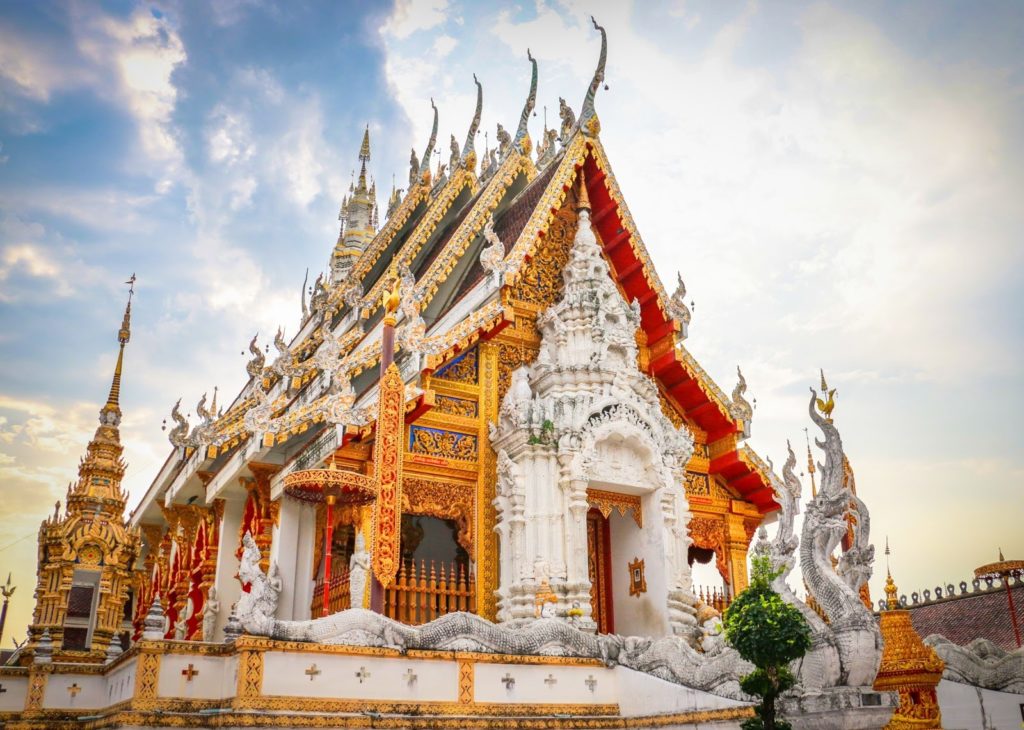
1. The Sacred Wat Phra That Cho Hae
About 10 kilometers from downtown Phrae is Wat Phra That Cho Hae, which houses the gilded Cho Hae Pagoda – one of Buddhism’s most sacred sites in Thailand. Legend has it that people in Phrae got a piece of delicate satin (or “hae” in the local tongue) from the old kingdom of Sipsongpanna (today’s Xishuangbanna in southern China). They wrapped the beautiful silk around Cho Hae Pagoda as an offering to Buddha and Buddhism. If you visit Phrae around the full moon of March, you can celebrate the annual Phra That Cho Hae Festival and enjoy local culture festivities. With a series of cultural shows, folk music, an alley of authentic food, beautiful crafts, and colorful processions. The 33-meter-high gilded pagoda is worth visiting any time of the year to experience local colors and spirits. It’s also a pilgrimage site for those who were born during the Year of the Tiger.
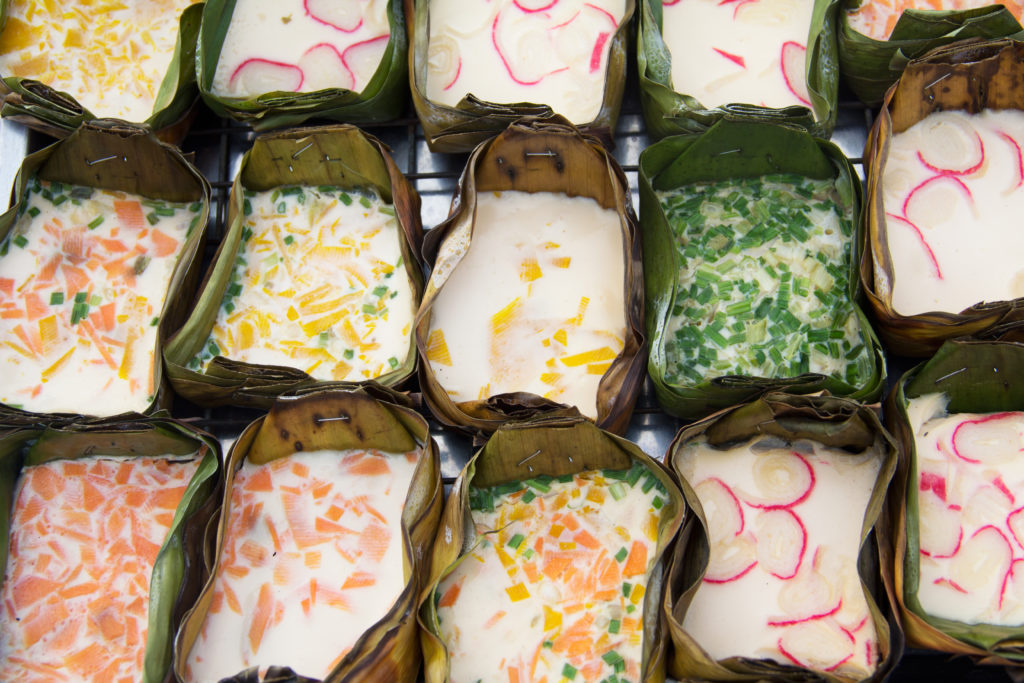
2. The Locally Authentic Saturday Walking Street Market
Old wooden houses, relaxed cafes, arts and crafts, mouth-watering street food, and game of bargaining beckons the locals and visitors to Kad Kongkao on a Saturday night. The air is filled with the aromatic mix of chili, herbs, spices, and fish sauce, the sizzling sound of frying oil, grilling meat, and the high-pitched shouts of hawkers. Stepping into the historic lane of Kham Lue will lead you to tons of delicious street foods. Grilled and smoky sausage, egg noodle with chicken soup, poached eggs in a banana-leaved bowl, sweet and milky rice cake, and many head-scratching dishes are sinfully tempting. Strolled deeper into elbow-jostling crowds, the legendary strip reveals its charm with old houses and mansions. Many heritage buildings are converted into stylish taverns, coffee bars, and boutique shops.
Kad Kongkao Market is on Kham Lue Rd. in downtown Phrae.
Opening Hours: 6 pm–10 p
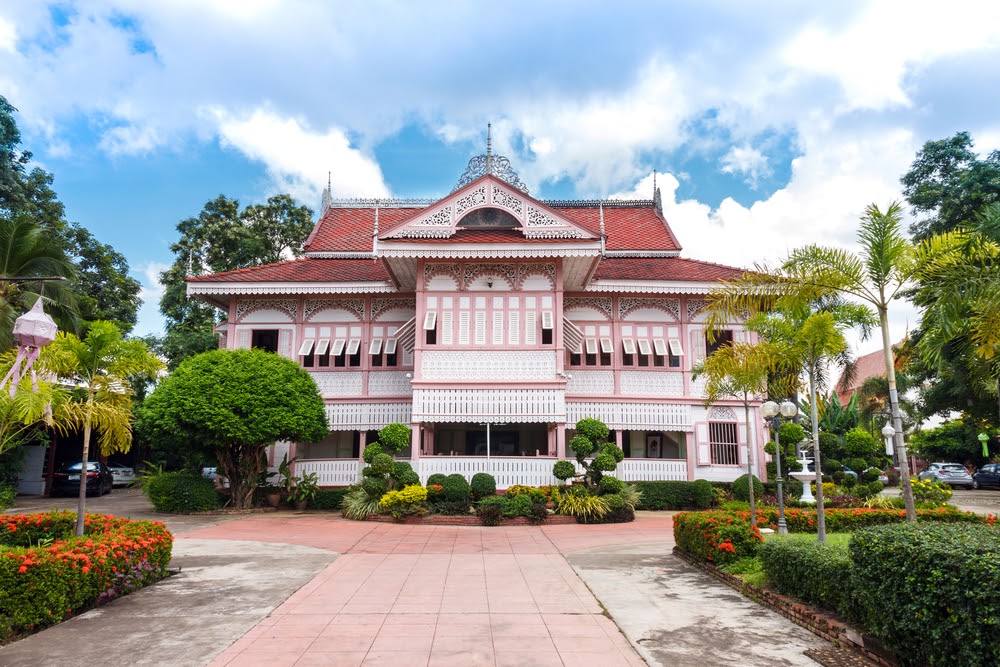
3. The Picturesque Pink Khum Wongburi
The bold statement on the pink and elaborate façade and embellishment would stun you the minute you step foot on the front yard. Built in 1897 by a Chinese architect from Guangzhou, this grand pink mansion was a bridal house – a wedding present which the last lord gave to his stepdaughter. The century-old wedding home is now a house museum. It leaves its doors open for visitors and culture buffs who are interested in the glamourous past of Phrae. The house itself is an architectural wonder. It is the first gingerbread house in Phrae – where back then, most of the locals lived in stilted cottages. The entire house is made of teak. With European, Chinese, and local Lanna accents, this historic gingerbread house is unique with its colonial design, Chinese symbols, and typical Lanna gables.
Each of the 20 rooms of Khum Wongburi is impressive with historic photos and family heirlooms.
Wongburi House Museum, Nai Wiang, Mueang Phrae, Phrae
Hours: Opens daily from 9 am-5 pm
Telephone: +6681 883 0546
Admission: 30 Baht ($0.96 USD)/person
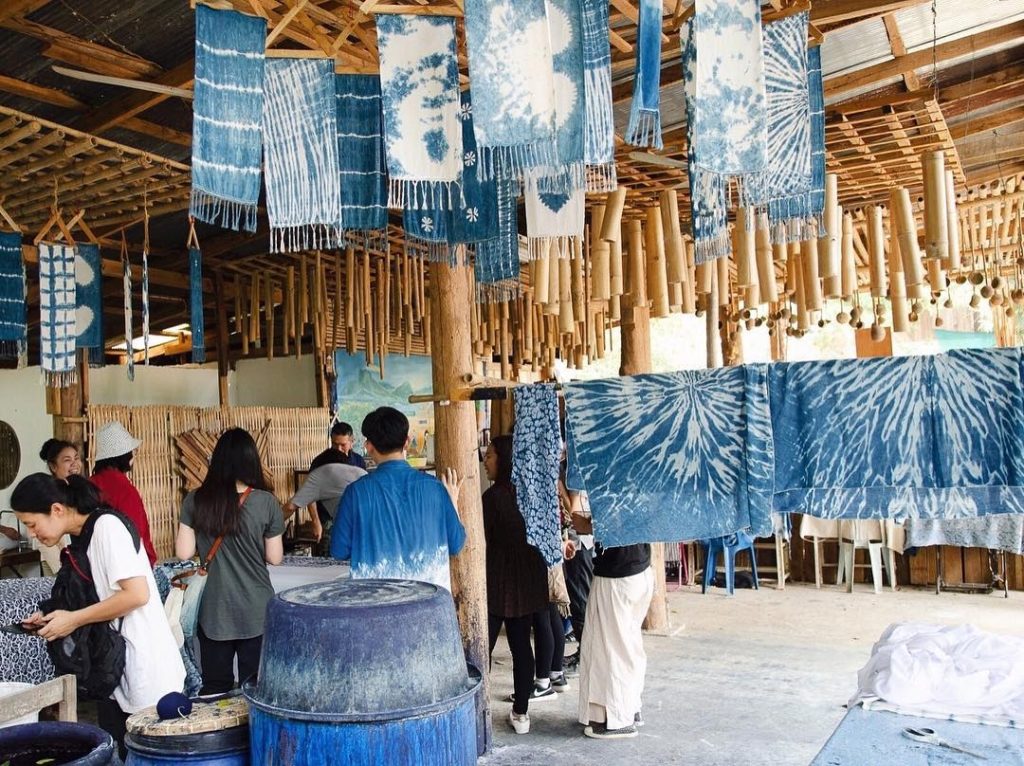
4. Craft + Coffee at Ban Matjai
As body and soul, people of Phrae and indigo-dyed cotton clothes, called “mo hom” by the locals, are inseparable. Everyone here is comfortable with light, soft indigo-dyed clothes. The farmers wear it, so do mahouts, loggers, school teachers, and food vendors, except for Buddhist monks who wear saffron robes. Ban Matjai Homemade and Café, a coffee shop and art studio in Phrae, offers a crafty break with indigo. Surrounded by leafy mango and longan trees, visitors and indigo enthusiasts can get their hands dirty to find beauty and balance in the clay pots containing indigo vats. Whether you’re looking for project inspiration, a fun group activity, or making hand-dying a new hobby, this tie-dye workshop promotes mindfulness and community spirit.
Ban Matjai, 88 Huai Ma, Mueang Phrae, Phrae. It’s about a 20-minute drive from downtown Phrae.
Opening Hours: 10am-5pm
Telephone: +6695 493 0909
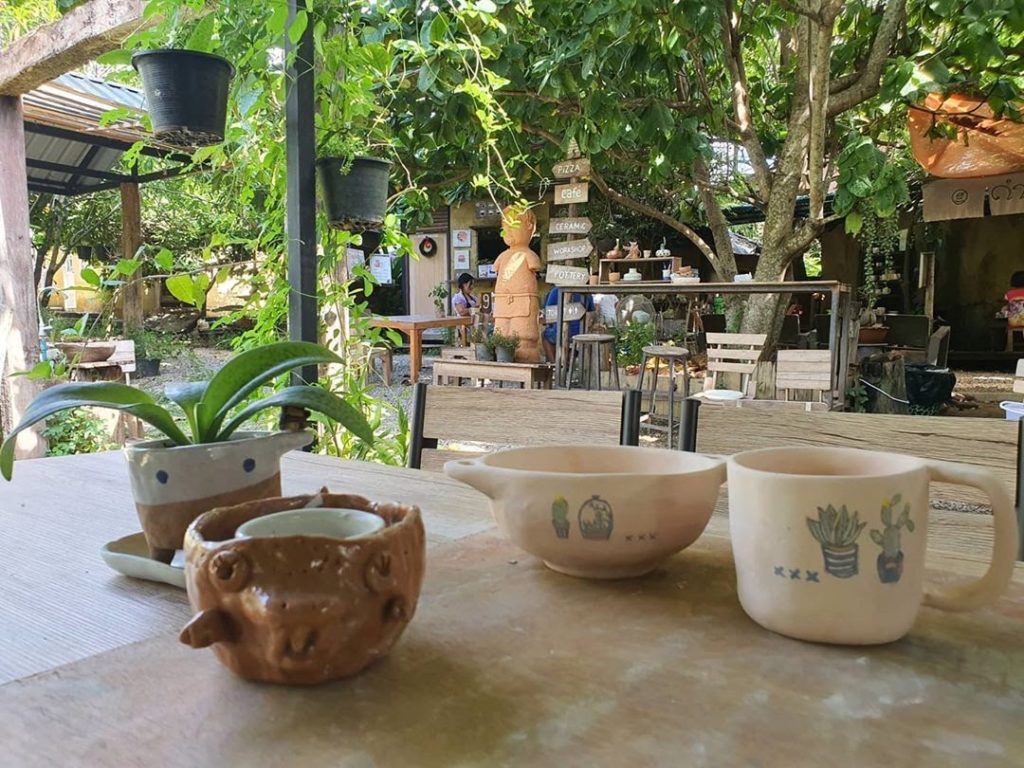
5. Bake It Like Kummee Studio
Phrae is turning into the perfect destination for those who are creative. Thanks to the young people in the province, who returned to their homes with creativity, they have turned Phrae into a creative hub. Within 20 minutes from downtown Phrae, Kummee Studio is one of the best places to learn new baking skills while eating home-made pizza. Run by a creative couple, Kummee Studio is a baking studio with a twist. Playing with fire, the husband, a ceramic artist, fires the clay in the kiln, while his wife bakes pizza in the oven. The studio offers a ceramic workshop and a short course for visitors who want to try their hand at clay work in a relaxing and welcoming atmosphere. For those who aren’t interested in attending a ceramic workshop, learning how to make a delicious double cheese Margherita Pizza is a tempting alternative.
Kummee Studio is about 20 minutes from the City center
Ban Mae Khami, Mueang Phrae, Phrae
Opening Hours: 10 am-4 pm (close on Tuesday and Wednesday)
Telephone: +6685 867 9358
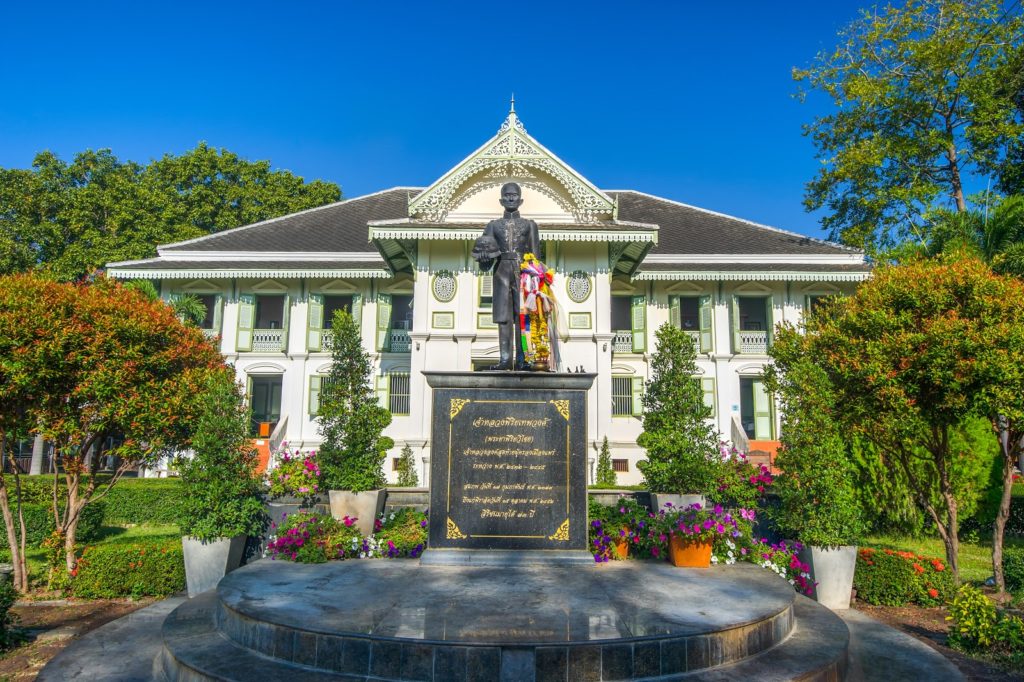
6. Explore Phrae on Foot
Phrae was Siam’s important hub of the teak industry between the late 19th and the early 20th centuries. For 50 years, the rulers and landlords earned a fortune from the timber trade. Many teak mansions, with a blend of Colonial architecture, were constructed in town, and most of them remain today. The best way to appreciate the historic area is by exploring on foot.
Set off from Pratu Chai ancient East Gate and head North along the leafy path on the old city wall. Phrae was an outpost of Chiang Mai back in the 16th century, and you could figure out how small it was while standing on top of the ancient city wall. On the right is the city moat, and on the left is the town center where old and new buildings come together.
10-minutes away from the East Gate is the North Gate, which keeps the old and new towns apart. This is where the Wat Hua Khuang neighborhood is located, where Coffee & Craft Café serves freshly-roasted coffee, and Hom 2493 is perfect for noodles and light meals.
From the North Gate, turn left to Kham Sean, the straight road connecting the South Gate with the Khom Lue Road and you will arrive at Khum Chao Luang. Built in 1892, this majestic Colonial building was a royal residence of the last Lord of Phrae. In 1902, when Shan ethnics invaded downtown Phrae to defy Siam power, Lord of Phrae became a prime suspect for organizing the infamous uprising. He abandoned the royal residence and ran away to Luang Phrabang in northern Laos. The historic building is now a museum, encouraging visitors to see an obscure part of Phrae history.

Khum Wongburi, a pink gingerbread house, is your next stop. A short walk from Khum Chao Luang, Khum Wongburi was a wedding present from the Lord of Phrae to his stepdaughter. This historic house is now a museum that’s well worth visiting for a momentary of noble life in the misty mountain.
Phrae people are considered rebellious, and there is a theory why. Phare has always found itself in the middle of political confrontations either between powerful Sukhothai, Phayao and Chiang Mai or the Siam and European empires or between the Allies and Axis during World War II.
Built in 1891 by the former treasurer, the Wichai Racha Residence has a lot of historical significance. The teak mansion was a safe house for Siamese officials when Phrae was invaded by Shan assailants. During World War II, it was a hiding place for secret agents and members of the Free Thai Movement – who worked behind the enemy line to defy the Japanese army. The government confiscated the teak mansion over a tax issue and was unoccupied for almost 50 years. The new owner restored Wichai Racha Residence thanks to the elegant and durable nature of teak.
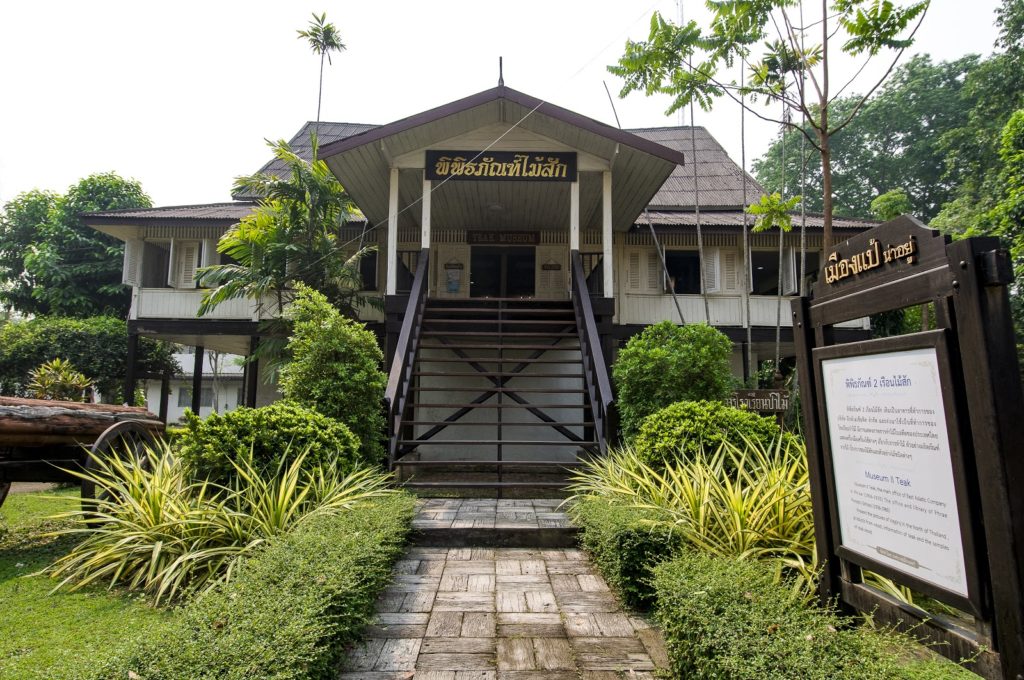
On the corner of Phra Non Tai Alley and Khum Doem Road, the two-story Teak Museum was built on the original estate of the East Asiatic Company from Denmark. From the tour, you’ll get an idea of how teak was cut down, pulled out, and shipped to Bangkok and Europe in the 19th century. Perched on the ancient city wall is a colonial building that used to be the residence of an officer of the East Asiatic Company.
East of the Teak Museum, the Khao Soi Klang Wiang restaurant on Wichai Racha Road is the perfect place to wrap up your walking tour with sensational noodles and local food.
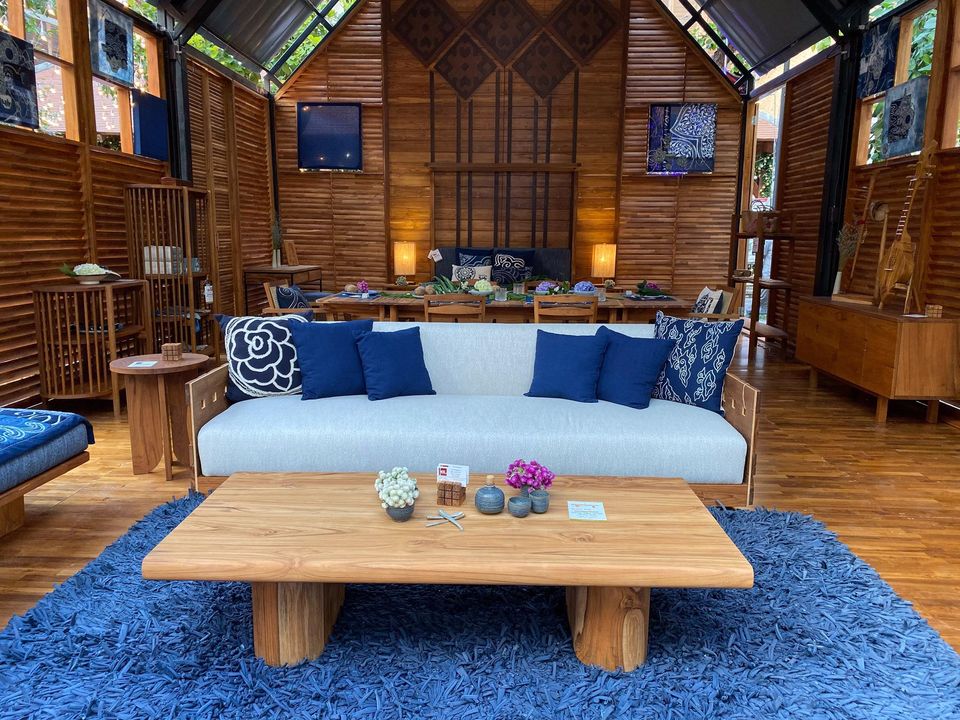
7. The Best Beds & Breakfasts
Gingerbread House Gallery
What started as a cozy café serving noodles and drinks, the Gingerbread House Gallery transformed into an art gallery and three-room hotel. It’s a charming little place with a brick and wood design. For breakfast, it offers excellent coffee and smoothies. There is a small handicraft shop here too. On the second floor, three spacious and elegant bedrooms are made of teak wood in modern Lanna style. Equipped with free Wi-Fi and located in the heart of the city, the Gingerbread House Gallery offers easy access to landmarks around the City of Phrae.
Gingerbread House Gallery, 94/1 Charoenmueang Rd, Mueang Phrae, Phrae
Opening Hours: 9 am-4 pm (Food)
Telephone: +6654 523 671
Hug Inn Phrae Hotel
Hug Inn Phrae is a modern and stylish hotel in the heart of Phrae that lets guests retreat in a creative environment. Rooms, with choices of a king-sized bed or two twin beds, are decorated in a sophisticated design with natural-dyed indigo textiles and local crafts. Hug Inn Phrae offers a comfy bed to lay your head, a promising breakfast, and useful advice for local exploration and handicraft workshops.
Hug Inn Phrae, 61 Tesaban Rd 2, Thung Kwao, Mueang Phrae, Phrae
Telephone: +6662 572 0077
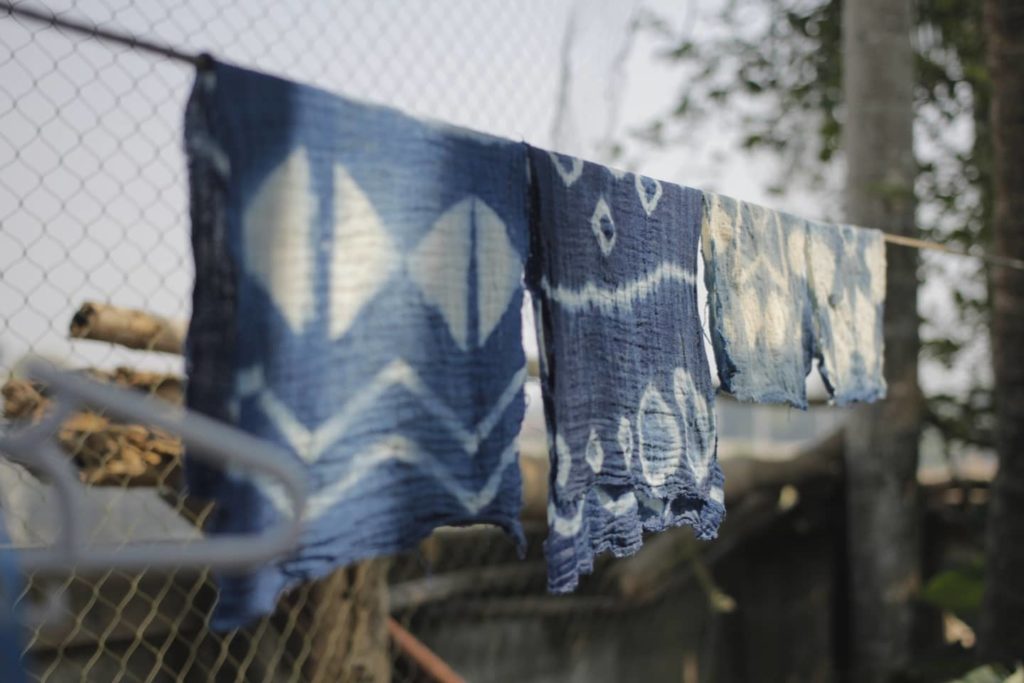
8. Fabric Fever
Indigo-dyed fabric is ideal for people with sensitive skin or prone to skin allergies. It is hypoallergenic, antibacterial, and skin-soothing. Local textile designers and artisans in Phrae take their indigo culture to the next level with fashionable and sustainable consciousness.
Kaew Wanna
Founded by a local family, Kaew Wanna is a reputable brand for natural indigo-dyed fabric for two decades. With a strong desire to make Phrae indigo textiles sustainably, Kaew Wanna obtains its indigo colorants from organic “hom” plants cultivated from the plantation in the mountain valley. Characterized by light blue and white cotton to convey intelligence and culture, Kaew Wanna indigo-dyed cotton is well-loved by Japanese fashion designers. Inside the Lanna wood house, you can buy indigo-dyed loom-woven cotton textiles, wallets, handkerchiefs, clothing, and scarves. You might walk around the studio to see the process of natural indigo-dyeing or treat yourself with some “khao soi” egg noodle.
Kaew Wanna is about 10 minutes away from the City of Phrae
160 Ban Khanomsen, Mueang Phrae,
Opening Hours: 9 am-4:30 pm
Telephone: +6681 960 4502
Kamon Indigo
Born and bred in Phrae, Kamonchanok Sasenssopha, a young female fashion designer, came back home, created her sustainable design, and opened Kamon Indigo after giving up her career in the fashion industry. She works with indigo, marigold, lac, and black ebony on natural dyeing. She makes her tie-and-dye design sustainable for a fashionable wardrobe.
Kamon Indigo is about 10 minutes away from the city center.
Ban Muang Mo, Mueang Phrae,
Opening Hours: 9 am-5:30 pm
Telephone: +6686 401 6741
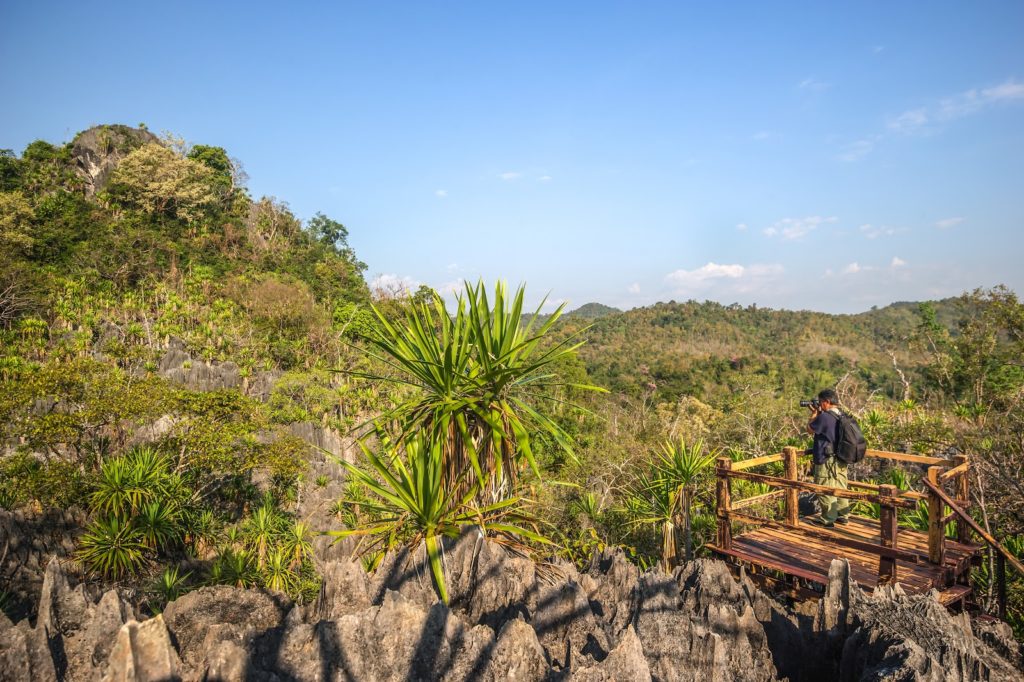
How To Get There
Traveling to Phrae can be done by plane. The nearest airport to Phrae is Lampang Airport – which is about an hour and a half drive south of the city. Nan Airport is about a 2-hour drive north of Phrae.
The Northern railway line from Bangkok to Chiang Mai stops at the Den Chai railway station – where Phrae is a 30-minute drive away.
Phrae connects to the Northern provinces of Thailand via the bus lines, and most of the buses stop at the Phrae bus terminal. Many buses head up daily from Bangkok Bus Terminal (Chatuchak) to Phrae (7 hours/Bt385).
Getting Around
The City of Phrae is small, and it doesn’t have a taxi to commute by. Local commuters take a motorcycle taxi, tricycle, and around-town “songtaew” vehicles when they want to go around. If you’re going to travel far, hire a songtaew, and make sure the price is set before the journey begins.


